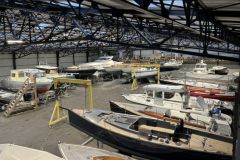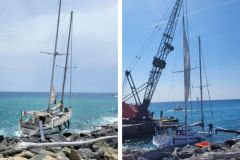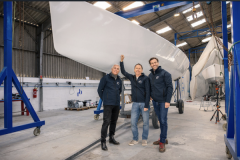Completing the work on the cockpit
In this week's 2 episodes, Matt is finalizing the lamination work related to the modification of the cockpit of his Duracell sailboat, from a 20th century Vendée Globe sailboat to a 21st century cruiser. He began by vacuum laminating the additions to the existing part of the boat, the side plating and transom.
He also cuts the last panels needed to close the new boxes under the side seats.
We also enjoy a few tacks on his sport keelboat Honey, which he built a few years earlier in plywood and carbon.
Estimate the changes in the weight of the boat
Modifying a boat has an impact on its displacement. But you can't modify it without paying attention to the balance of the boat, its future trim and heel. So Matt is a little late on this issue. He weighs the landed elements, or estimates them with samples when he doesn't have all the elements. For the added material, he proceeds in the same way and adds a mass corresponding to the mass of fiberglass to which he adds an equivalent mass of resin for the laminations made in place.
Once the calculations have been made, the mass saved at this stage is 135 kg. The measurements also make it possible to evaluate the interest of working under vacuum. On all the pieces tested, Matt found about 1 kg less per m2 on the panels made under vacuum compared to those made in contact.









